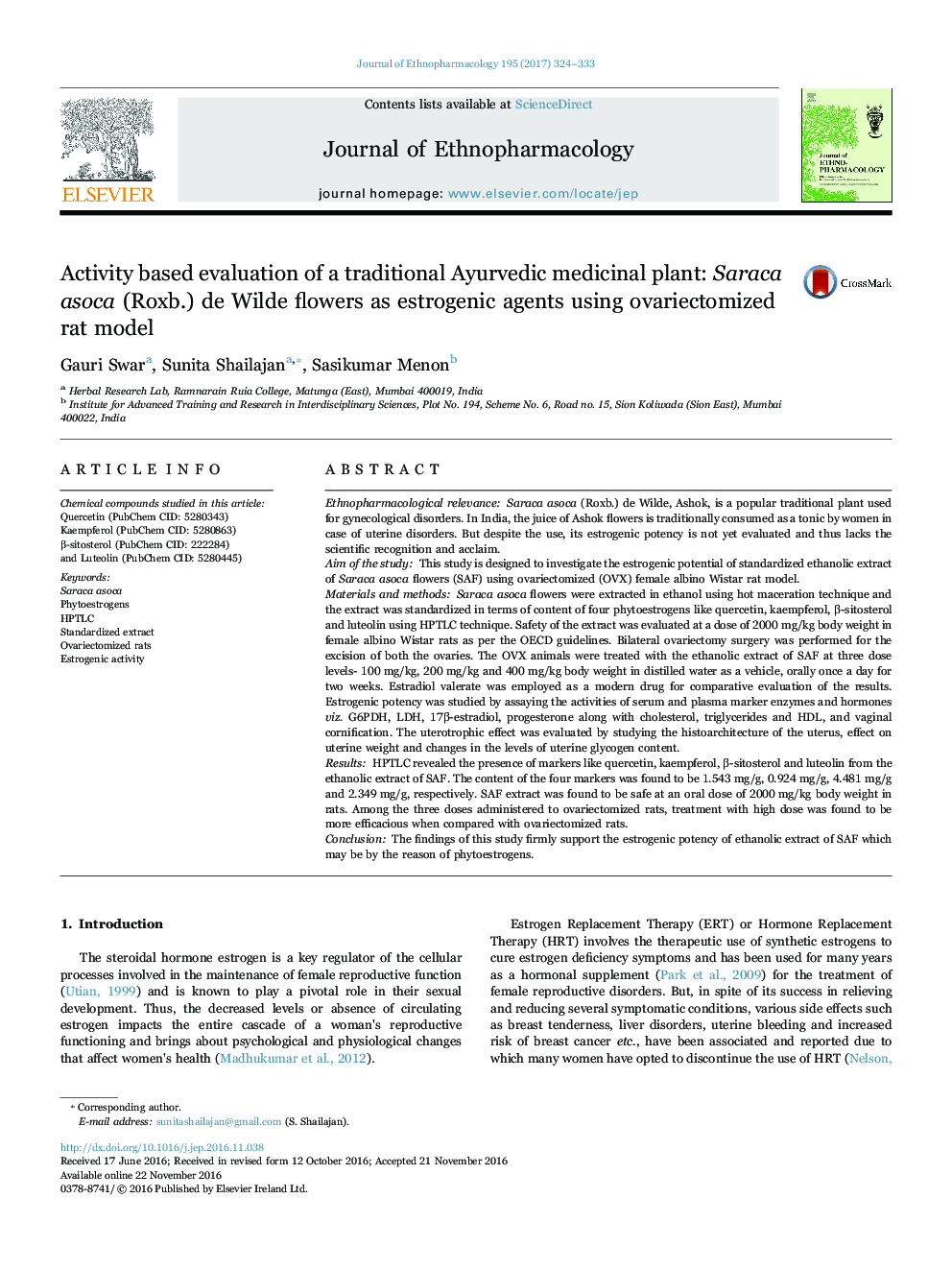| کد مقاله | کد نشریه | سال انتشار | مقاله انگلیسی | نسخه تمام متن |
|---|---|---|---|---|
| 5556398 | 1560367 | 2017 | 10 صفحه PDF | دانلود رایگان |

Ethnopharmacological relevanceSaraca asoca (Roxb.) de Wilde, Ashok, is a popular traditional plant used for gynecological disorders. In India, the juice of Ashok flowers is traditionally consumed as a tonic by women in case of uterine disorders. But despite the use, its estrogenic potency is not yet evaluated and thus lacks the scientific recognition and acclaim.Aim of the studyThis study is designed to investigate the estrogenic potential of standardized ethanolic extract of Saraca asoca flowers (SAF) using ovariectomized (OVX) female albino Wistar rat model.Materials and methodsSaraca asoca flowers were extracted in ethanol using hot maceration technique and the extract was standardized in terms of content of four phytoestrogens like quercetin, kaempferol, β-sitosterol and luteolin using HPTLC technique. Safety of the extract was evaluated at a dose of 2000 mg/kg body weight in female albino Wistar rats as per the OECD guidelines. Bilateral ovariectomy surgery was performed for the excision of both the ovaries. The OVX animals were treated with the ethanolic extract of SAF at three dose levels- 100 mg/kg, 200 mg/kg and 400 mg/kg body weight in distilled water as a vehicle, orally once a day for two weeks. Estradiol valerate was employed as a modern drug for comparative evaluation of the results. Estrogenic potency was studied by assaying the activities of serum and plasma marker enzymes and hormones viz. G6PDH, LDH, 17β-estradiol, progesterone along with cholesterol, triglycerides and HDL, and vaginal cornification. The uterotrophic effect was evaluated by studying the histoarchitecture of the uterus, effect on uterine weight and changes in the levels of uterine glycogen content.ResultsHPTLC revealed the presence of markers like quercetin, kaempferol, β-sitosterol and luteolin from the ethanolic extract of SAF. The content of the four markers was found to be 1.543 mg/g, 0.924 mg/g, 4.481 mg/g and 2.349 mg/g, respectively. SAF extract was found to be safe at an oral dose of 2000 mg/kg body weight in rats. Among the three doses administered to ovariectomized rats, treatment with high dose was found to be more efficacious when compared with ovariectomized rats.ConclusionThe findings of this study firmly support the estrogenic potency of ethanolic extract of SAF which may be by the reason of phytoestrogens.
384
Journal: Journal of Ethnopharmacology - Volume 195, 4 January 2017, Pages 324-333